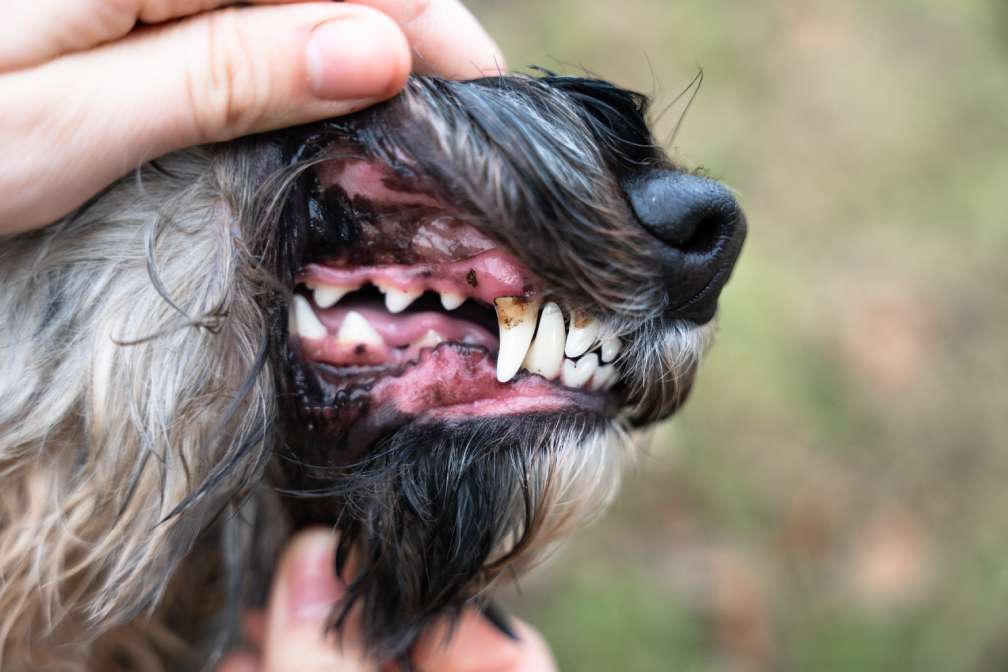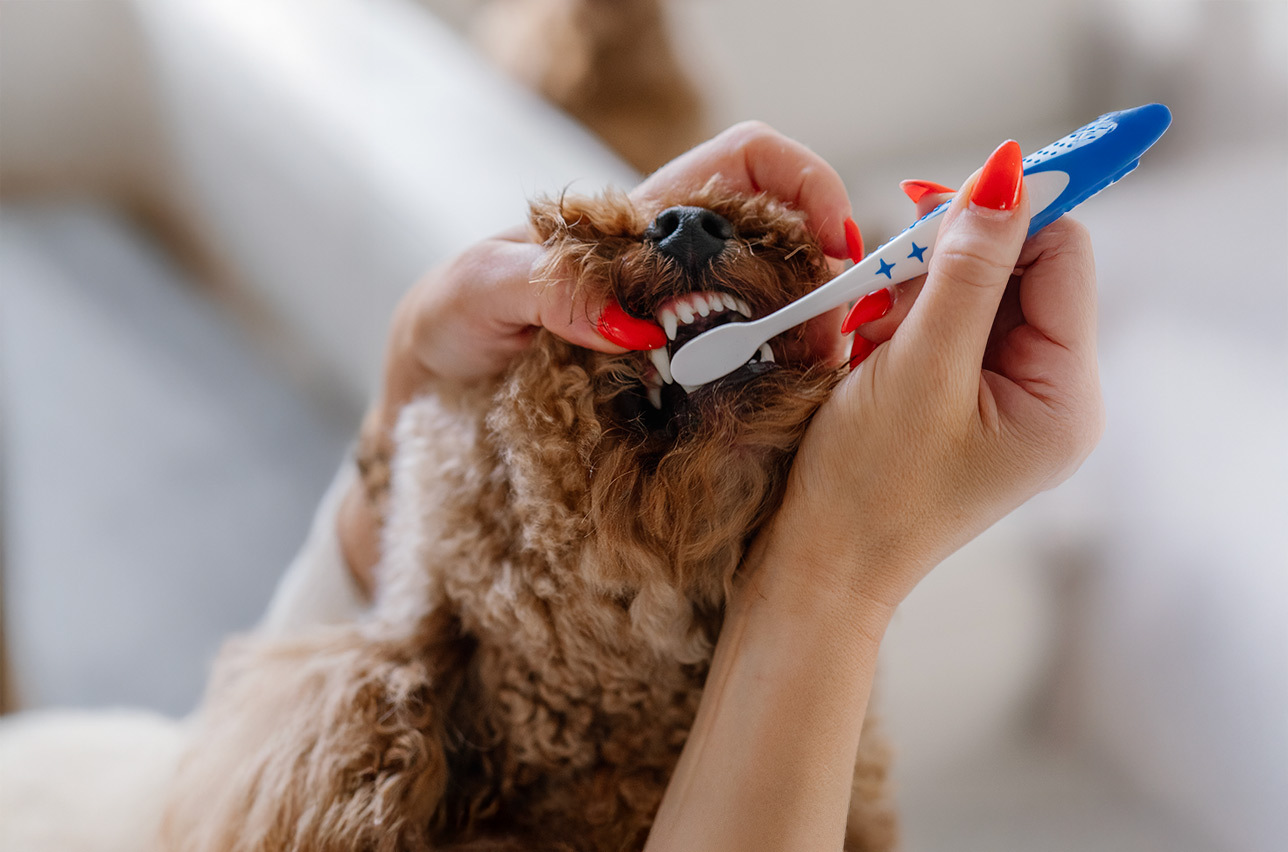How Much Does Dog Teeth Cleaning Cost in the UK?
In this article:
Tartar build-up is a common issue in dogs – especially as they age or haven’t received regular dental care. Left untreated, it can lead to pain, tooth loss, and other serious health problems. But how much does it actually cost to have your dog’s teeth professionally cleaned in the UK?
Professional dental cleanings typically range from £149 to £500, depending on your dog’s needs and the clinic you choose. On average, most owners can expect to pay around £233–£235.
To remove tartar safely and thoroughly, your dog will need to be placed under general anaesthetic. This allows the vet to clean both above and below the gumline and carefully examine the entire mouth without causing stress or discomfort. In some cases, X-rays or extractions may also be required.
What’s Included in a Cleaning?
A typical dental procedure includes:
- General anaesthetic and monitoring
- Full oral examination
- Ultrasonic and hand scaling (tartar removal)
- Polishing of the teeth
- Dental X-rays (if needed)
- Extraction of damaged or diseased teeth (if necessary)
- Pre-clean blood tests, IV fluids, pain relief, and post-op care
What Drives the Cost?
- Anaesthesia & Monitoring – Includes pre-op blood testing and receiving fluid therapy.
- Dental Equipment & Expertise – Skilled vet time, X‑rays, ultrasonic scalers + polishers.
- Extractions & Complications – Removing diseased teeth can cost £300–£400 per tooth.
- Dog Size & Health – Larger or older dogs carry more anaesthetic and monitoring needs.
- Clinic Type & Location – Veterinary chains in urban areas tend to be more expensive.
Regional Variations
Prices vary widely across the UK:
- Smaller dogs in less expensive regions may pay as little as £149–£200
- London and larger cities often see fees of £500+, especially when more complex work is required
What Does Tartar Look Like on a Dog?
Tartar is often yellowish-brown and clearly visible on the surface of the teeth, especially along the gumline. It starts as plaque and gradually hardens into a chalky, scale-like deposit.
Signs to look out for:
- Bad breath
- Red or inflamed gums
- Yellowish deposits on the teeth

Can You Remove Tartar from Your Dog’s Teeth at Home?
Vet cleanings under anaesthesia remain the gold standard for comprehensive care, especially when tartar is present or oral disease is suspected. Many vets recommend annual dental checks to monitor your dog’s oral health.
Once tartar has formed, it’s hard and firmly attached to the teeth – and usually needs to be removed using professional equipment under anaesthetic. However, products like ProDen PlaqueOff® have been shown to help break down plaque and support better oral health when used daily.
The best approach is prevention. You can help reduce tartar build-up by:
- Brushing your dog’s teeth regularly with a dog-safe toothbrush and toothpaste
- Using supplements and/or dental chews
- Checking your dog’s teeth often and watching for any changes
If your dog gets stressed before a vet visit
FAQ
Yes, anaesthesia is usually necessary to ensure the procedure is thorough and stress-free.
Vets sometimes use ultrasonic tools for dental cleaning. These devices have a rapidly vibrating metal tip that gently removes tartar. The vibrations help loosen the tartar from the surface of the teeth.
It appears as a yellow to brown build-up, often along the gumline. Tartar is hard and can lead to inflammation if left untreated.
Yes – through regular tooth brushing, dental chews, and oral hygiene supplements.
How Much Does Dog Teeth Cleaning Cost in the UK?
Tartar build-up is a common issue in dogs – especially as they age or haven’t received regular dental care. Left untreated, it can lead to pain, tooth loss, and other serious health problems. But how much does it actually cost to have your dog’s teeth professionally cleaned in the UK?
Professional dental cleanings typically range from £149 to £500, depending on your dog’s needs and the clinic you choose. On average, most owners can expect to pay around £233–£235.
To remove tartar safely and thoroughly, your dog will need to be placed under general anaesthetic. This allows the vet to clean both above and below the gumline and carefully examine the entire mouth without causing stress or discomfort. In some cases, X-rays or extractions may also be required.
What’s Included in a Cleaning?
A typical dental procedure includes:
- General anaesthetic and monitoring
- Full oral examination
- Ultrasonic and hand scaling (tartar removal)
- Polishing of the teeth
- Dental X-rays (if needed)
- Extraction of damaged or diseased teeth (if necessary)
- Pre-clean blood tests, IV fluids, pain relief, and post-op care
What Drives the Cost?
- Anaesthesia & Monitoring – Includes pre-op blood testing and receiving fluid therapy.
- Dental Equipment & Expertise – Skilled vet time, X‑rays, ultrasonic scalers + polishers.
- Extractions & Complications – Removing diseased teeth can cost £300–£400 per tooth.
- Dog Size & Health – Larger or older dogs carry more anaesthetic and monitoring needs.
- Clinic Type & Location – Veterinary chains in urban areas tend to be more expensive.
Regional Variations
Prices vary widely across the UK:
- Smaller dogs in less expensive regions may pay as little as £149–£200
- London and larger cities often see fees of £500+, especially when more complex work is required
What Does Tartar Look Like on a Dog?
Tartar is often yellowish-brown and clearly visible on the surface of the teeth, especially along the gumline. It starts as plaque and gradually hardens into a chalky, scale-like deposit.
Signs to look out for:
- Bad breath
- Red or inflamed gums
- Yellowish deposits on the teeth
IMAGE
Can You Remove Tartar from Your Dog’s Teeth at Home?
Vet cleanings under anaesthesia remain the gold standard for comprehensive care, especially when tartar is present or oral disease is suspected. Many vets recommend annual dental checks to monitor your dog’s oral health.
Once tartar has formed, it’s hard and firmly attached to the teeth – and usually needs to be removed using professional equipment under anaesthetic. However, products like ProDen PlaqueOff® have been shown to help break down plaque and support better oral health when used daily.
The best approach is prevention. You can help reduce tartar build-up by:
- Brushing your dog’s teeth regularly with a dog-safe toothbrush and toothpaste
- Using supplements and/or dental chews
- Checking your dog’s teeth often and watching for any changes
If your dog gets stressed before a vet visit
Our calming supplements can help ease anxiety before the visit.
Product widget
H2-rubrik: FAQ
Does my dog need to be anaesthetised to remove tartar?
Yes, anaesthesia is usually necessary to ensure the procedure is thorough and stress-free.
How does ultrasonic cleaning work?
Vets sometimes use ultrasonic tools for dental cleaning. These devices have a rapidly vibrating metal tip that gently removes tartar. The vibrations help loosen the tartar from the surface of the teeth.
What does tartar look like on a dog?
It appears as a yellow to brown build-up, often along the gumline. Tartar is hard and can lead to inflammation if left untreated.
Can I prevent tartar on my dog’s teeth?
Yes – through regular tooth brushing, dental chews, and oral hygiene supplements.




